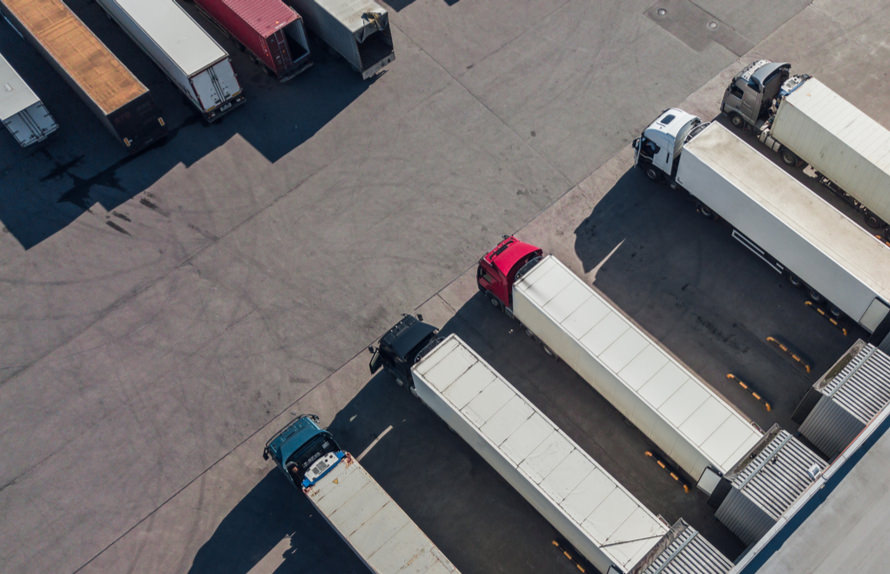
The logistics industry is rapidly evolving in response to technological advancements, changing consumer expectations, and global economic shifts. As we look ahead, several key trends are poised to shape the future of logistics, revolutionizing the way goods are transported, warehoused, and delivered.
From automation and artificial intelligence to sustainability and last-mile innovations, this post explores the major trends that will redefine the logistics landscape in the coming years.
TL;DR Supply Chain Trends to Watch
- Expanding sales channels – shoppers can buy on more platforms than ever before, which means omnichannel brands need to have robust global supply chains and logistics processes to meet demand across channels.
- Democratization of shipping carriers – with the rise of new technologies (like TMS solutions) shippers have access to a broader range of carriers to meet customer delivery expectations.
- Sustainable logistics – vendors across the global supply chain are making a stronger effort to implement environmentally friendly practices.
- Automation – all sectors of logistics are adopting automated processes (from fulfillment robots to AI customer support) to reduce error, lower overall costs, and increase throughput and efficiency.
Expanding Sales Channels
The growth of ecommerce has led to the emergence of omnichannel retailing, where customers expect seamless shopping experiences across multiple channels, including online platforms, brick-and-mortar stores, and mobile apps. The sheer number of sales channels has exploded in the past few years to include shopping directly via social platforms like Instagram and Tik Tok, to product ads now being a regular occurrence in video games and VR experiences.
With integration platforms like Shopify, and new fulfillment models like Amazon Multichannel Fulfillment, brands have more opportunities than ever to connect with customers. The big difference now is that that with the advent of integration technology, brands can turn many of these new channels on without telling their supply chain partners because it’s all connected and orders appear to be coming from the same place. This is as opposed to providing fulfillment for big box channels like Target, which when added as a sales outlet would require weeks of integration, special labels, variance in fulfillment and kitting and more.
Carrier Diversification
Regional carriers have become a stronger presence in the overall shipping carrier landscape, and more ecommerce brands are choosing to move away from the “big name” US carriers—FedEx and UPS, namely. Brands are now looking to lower their overall costs, reduce surcharges, and seek out quality service to maximize customer satisfaction. They are finding these in regional carriers more than the major shipping players.
With more advancements in technology, like robust TMS (transportation management system), ecommerce businesses and logistics providers can more easily stitch together a comprehensive network of reliable regional carriers. This diversification of shipping services will undoubtedly tip the scales of the shipping market in favor of shippers.

Sustainability and Green Initiatives
As the world grapples with environmental challenges, sustainability has become a significant concern for the logistics industry. Businesses are increasingly adopting green initiatives to reduce their carbon footprint and contribute to a more sustainable future.
One key trend in sustainable logistics is the adoption of alternative fuels and energy-efficient transportation. Electric and hybrid vehicles are gaining popularity as they offer lower emissions and reduced dependence on fossil fuels. Companies are exploring the use of renewable energy sources, such as solar and wind power, to power their warehouses and fulfillment centers.
Additionally, sustainable packaging solutions and waste reduction strategies are being implemented to minimize the environmental impact of logistics operations. This includes using biodegradable materials, optimizing packaging design to reduce waste, and implementing recycling programs.
Last-Mile and Urban Logistics
The last-mile delivery challenge, which involves transporting goods from the fulfillment center to the end consumer, has long been a pain point for logistics companies. To address this issue, several innovative solutions are shaping the future of urban logistics.
One such solution is the utilization of micro-fulfillment centers located closer to the end-consumer, enabling faster and more efficient deliveries. Another trend is the emergence of delivery lockers and click-and-collect points, allowing consumers to retrieve packages at their convenience.
Automation Across the Supply Chain
Digitalization is a trend that is transforming the logistics industry. With the rapid advancements in technology, logistics companies are leveraging digital platforms, artificial intelligence (AI), and robotics to streamline their operations and improve efficiency.
One key aspect of digitalization is the adoption of advanced supply chain management systems. These systems integrate various functions, including inventory management, order processing, and transportation planning, into a single, centralized platform. This allows for real-time tracking and visibility across the entire supply chain, enabling businesses to make data-driven decisions about their operations.
Section 321 Logistics
Ecommerce brands importing products into the US have the option to bring products in duty and tax free, when they meet certain criteria.
Under the regulations of the US Customs and Border Protection (CBP) there is a section of import regulation called Section 321 that permits shipments of low-value goods to circumvent taxes and duties, significantly lowering the cost of importing goods into the US. Section 321 speeds up border crossings and eliminates the import duties and tariffs typically associated with imported goods When a customer places an order, it’s picked, packed, and shipped — tax and duty-free — back into the U.S.
This supply chain strategy is gaining popularity among ecommerce brands who ship lower value goods, like CPG items, beauty products, and more. It’s important to work closely with an international shipping expert to start importing products under Section 321.
Big Data and Predictive Analytics
The availability of vast amounts of data is transforming the way logistics companies operate. By harnessing big data and predictive analytics, businesses can gain valuable insights into consumer behavior, demand patterns, and supply chain performance.
With predictive analytics, logistics companies can forecast demand accurately, optimize inventory levels, and minimize stockouts. By analyzing historical data and market trends, businesses can anticipate fluctuations in demand and adjust their operations accordingly. This enables them to achieve a leaner supply chain and improve customer satisfaction.
Big data analytics can be used to optimize transportation routes, reduce fuel consumption, and improve overall efficiency. By analyzing traffic patterns, weather conditions, and other factors, logistics companies can identify the most efficient routes and modes of transportation, reducing costs and carbon emissions.
Autonomous Vehicles and Drones
Autonomous vehicles and drones are poised to revolutionize the transportation and delivery aspects of the logistics industry. Self-driving trucks can operate around the clock, improving efficiency and reducing labor costs. These vehicles are equipped with advanced sensors and AI capabilities, enabling them to navigate safely and effectively even in challenging conditions.
Similarly, drones are increasingly being tested for last-mile delivery in urban and remote areas. They offer swift delivery, especially for small and lightweight packages, while avoiding traffic congestion and reducing the burden on traditional delivery methods. The adoption of autonomous vehicles and drones is contingent on overcoming regulatory hurdles and ensuring public safety, but their potential impact on the logistics industry is immense.
Internet of Things (IoT) and Real-time Tracking
The Internet of Things (IoT) has introduced a new level of visibility and control in the logistics sector. IoT devices, such as sensors and RFID tags, are being integrated into shipments, vehicles, and warehouses, allowing real-time tracking and monitoring of goods throughout the supply chain.
With IoT-enabled logistics, businesses can identify inefficiencies, predict maintenance needs, and optimize inventory management. Real-time tracking enhances transparency, improves security, and helps in anticipating and addressing potential disruptions in the supply chain. As the cost of IoT devices decreases and their capabilities increase, we can expect wider adoption of this technology in the logistics industry.
Bottom Line
The future of logistics is being shaped by various key trends that are transforming the industry. Digitalization and automation are streamlining operations, while big data and predictive analytics are optimizing supply chain performance. The rise of e-commerce and omni-channel retailing is driving innovation in order fulfillment and last-mile delivery. Finally, sustainability and green initiatives are paving the way for a more environmentally friendly logistics sector.
To stay ahead in this evolving landscape, businesses must embrace these trends and invest in the necessary technologies and infrastructure. By leveraging digital platforms, harnessing big data, and adopting sustainable practices, logistics companies can enhance efficiency, reduce costs, and meet the ever-changing demands of customers.
If you’re looking for a 3PL with fulfillment centers in cities across the US, we own and operate facilities in the Bay Area, Los Angeles, Kentucky and the East Coast. Use DCL’s national footprint of warehouses to distribute your inventory across the country to reduce transit times and save on shipping costs. If you need fulfillment or shipping support and want to partner with DCL Logistics, we’d love to hear from you.








